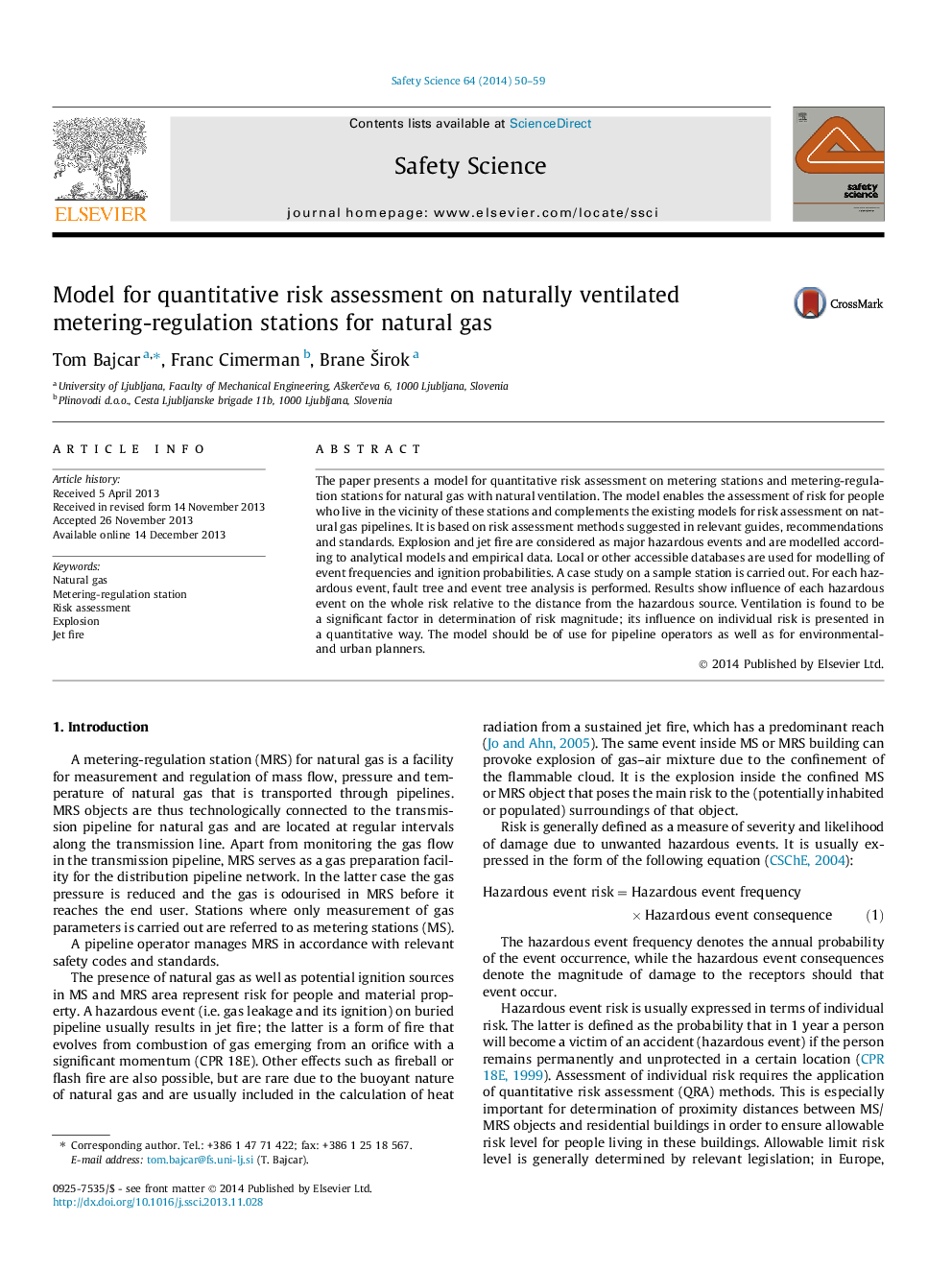| Article ID | Journal | Published Year | Pages | File Type |
|---|---|---|---|---|
| 6976359 | Safety Science | 2014 | 10 Pages |
Abstract
The paper presents a model for quantitative risk assessment on metering stations and metering-regulation stations for natural gas with natural ventilation. The model enables the assessment of risk for people who live in the vicinity of these stations and complements the existing models for risk assessment on natural gas pipelines. It is based on risk assessment methods suggested in relevant guides, recommendations and standards. Explosion and jet fire are considered as major hazardous events and are modelled according to analytical models and empirical data. Local or other accessible databases are used for modelling of event frequencies and ignition probabilities. A case study on a sample station is carried out. For each hazardous event, fault tree and event tree analysis is performed. Results show influence of each hazardous event on the whole risk relative to the distance from the hazardous source. Ventilation is found to be a significant factor in determination of risk magnitude; its influence on individual risk is presented in a quantitative way. The model should be of use for pipeline operators as well as for environmental- and urban planners.
Related Topics
Physical Sciences and Engineering
Chemical Engineering
Chemical Health and Safety
Authors
Tom Bajcar, Franc Cimerman, Brane Å irok,
